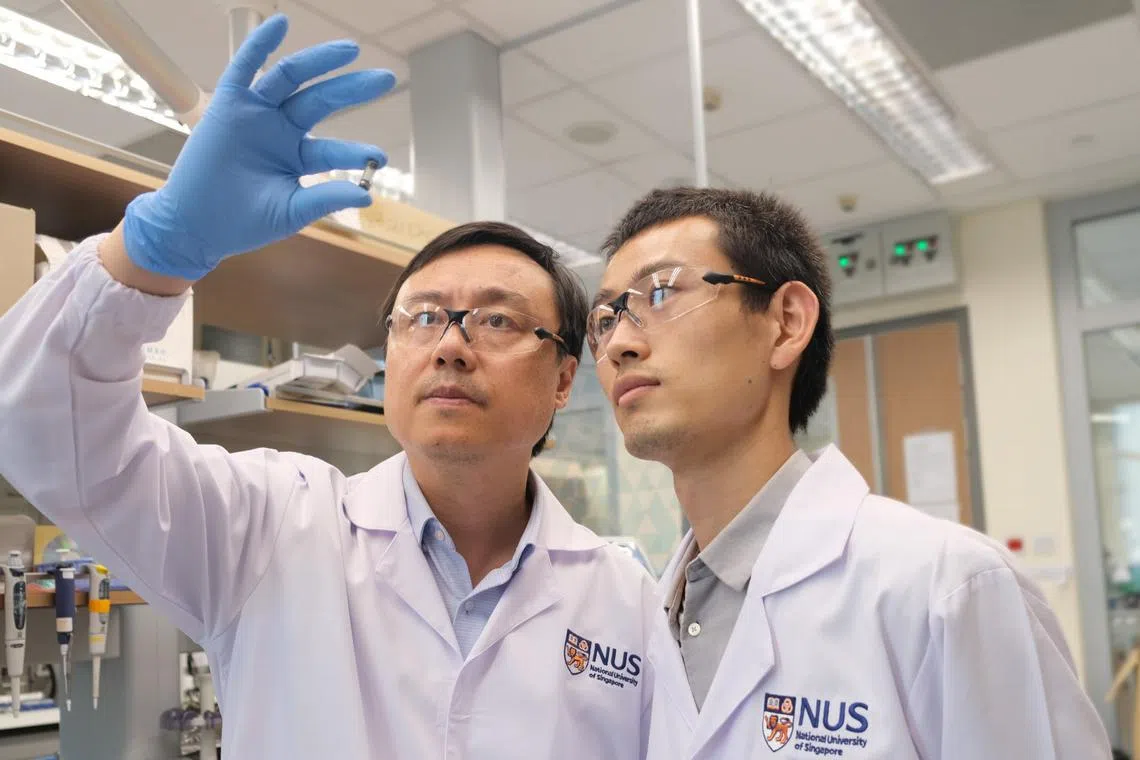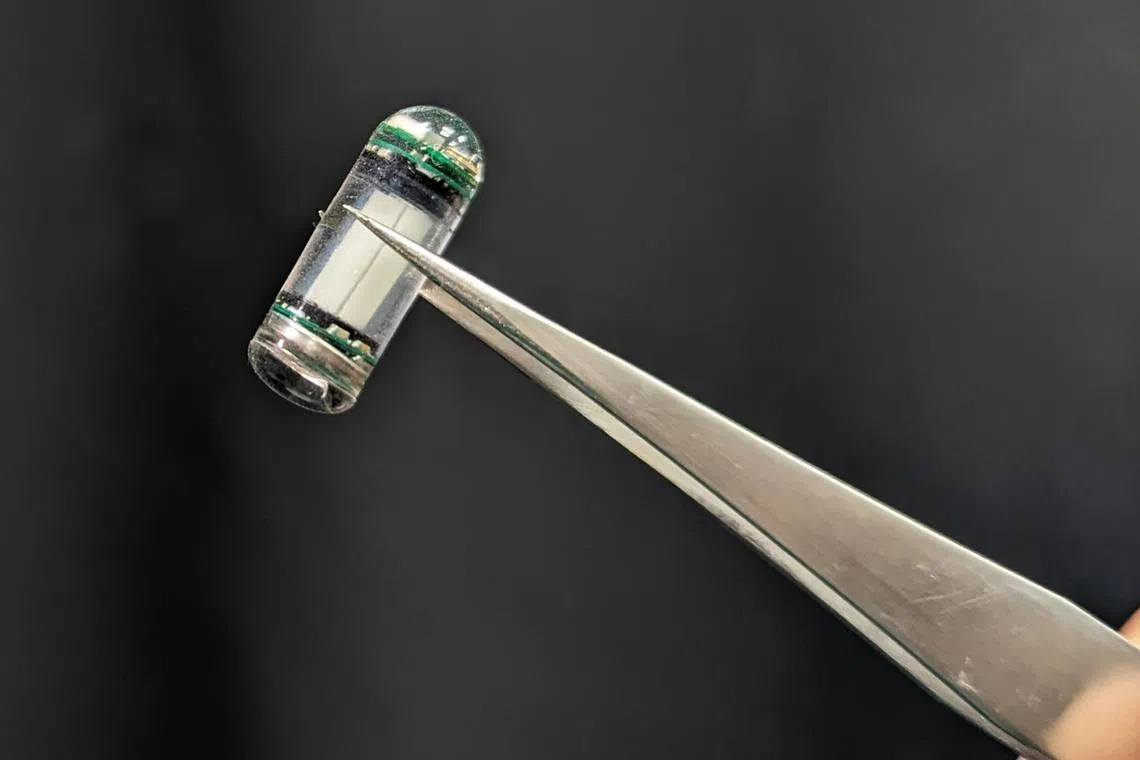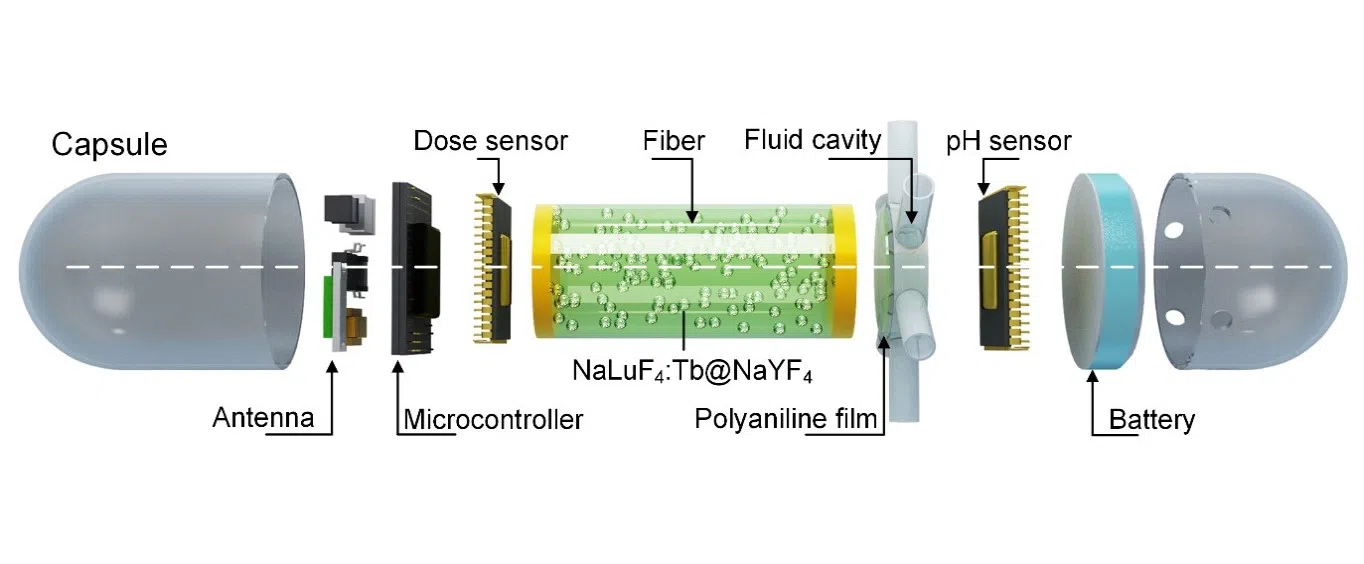NUS develops ‘pill’ that may allow more precise radiotherapy doses for gastric cancer patients
Sign up now: Get ST's newsletters delivered to your inbox

Prof Liu Xiaogang (left) and Dr Hou Bo from the NUS Department of Chemistry were key members of the team that developed the novel capsule dosimeter.
PHOTO: NATIONAL UNIVERSITY OF SINGAPORE
Follow topic:
SINGAPORE - Swallowing a pill of mechanical parts could help gastric cancer patients get a more precise dose of radiotherapy, which typically uses high-energy X-rays to destroy cancer cells.
A team of scientists from the department of chemistry at the National University of Singapore’s (NUS) Faculty of Science, in collaboration with researchers from the NUS Yong Loo Lin School of Medicine, Tsinghua University and Shenzhen Institute of Advanced Technology, has invented a dosimeter in the form of a capsule.
It can accurately measure X-ray doses delivered through the skin to the cancer cells in the gastrointestinal tract of a patient.
Professor Liu Xiaogang, principal investigator of the project, said: “Radiation therapy is usually delivered outside of the body to the skin, muscles and bones before finally reaching the cancer cells.
“Current measuring devices commonly placed directly or near the patient’s skin to estimate the amount of radiation in the target area do not take into account the amount of radiation being absorbed by the body.”
At 1.8cm long and 0.7cm wide, the capsule is of one of the smaller sizes available in the market, said Prof Liu.
It can accurately measure X-ray doses delivered externally, from the skin to other parts of the body such as the muscles and bones, before reaching the cancer cells in the gastrointestinal tract of a patient.
Once swallowed, the capsule moves through the gastrointestinal tract.
It contains nano-sized scintillators made from hyper-sensitive materials that will generate light from X-ray radiation. The light is then measured by a sensor.
At the same time, the fluidic module allows gastric fluid to be collected for pH detection by a film that changes colour in accordance with the pH level. This colour change is captured by a second sensor in the capsule.
Information from both sensors, in the form of photoelectric signals, is processed by a microcontroller circuit board, before being sent via Bluetooth and an antenna to a mobile phone app.
The raw data is then analysed using artificial intelligence to display information such as the radiotherapy dose, temperature and pH of the tissues undergoing radiotherapy.
As cancer cells typically thrive in an acidic environment, pH levels are indicative of the effectiveness of the radiotherapy, said Prof Liu, adding that the pH should return to a neutral level when the cancer cells die.
Temperatures detected by both sensors could also indicate any negative reactions to radiotherapy treatment, such as allergies.

The components of the dosimeter fit into an 18mm by 7mm capsule, a common size for many supplements and medicines.
PHOTO: NATIONAL UNIVERSITY OF SINGAPORE
After testing the capsule on animals, the research team is now working to bring their innovation towards clinical application, as well as to use magnets to control the movement of the capsule, said Prof Liu.
Apart from using the capsule for real-time monitoring of radiation inside the cancer-inflicted gastrointestinal tract, the team is exploring different applications, he said.
These include monitoring radiotherapy in cancers located in the brain and thyroid, as well as non-cancer ailments like acid reflux.

The components within the capsule dosimeter.
PHOTO: Nature Biomedical Engineering

